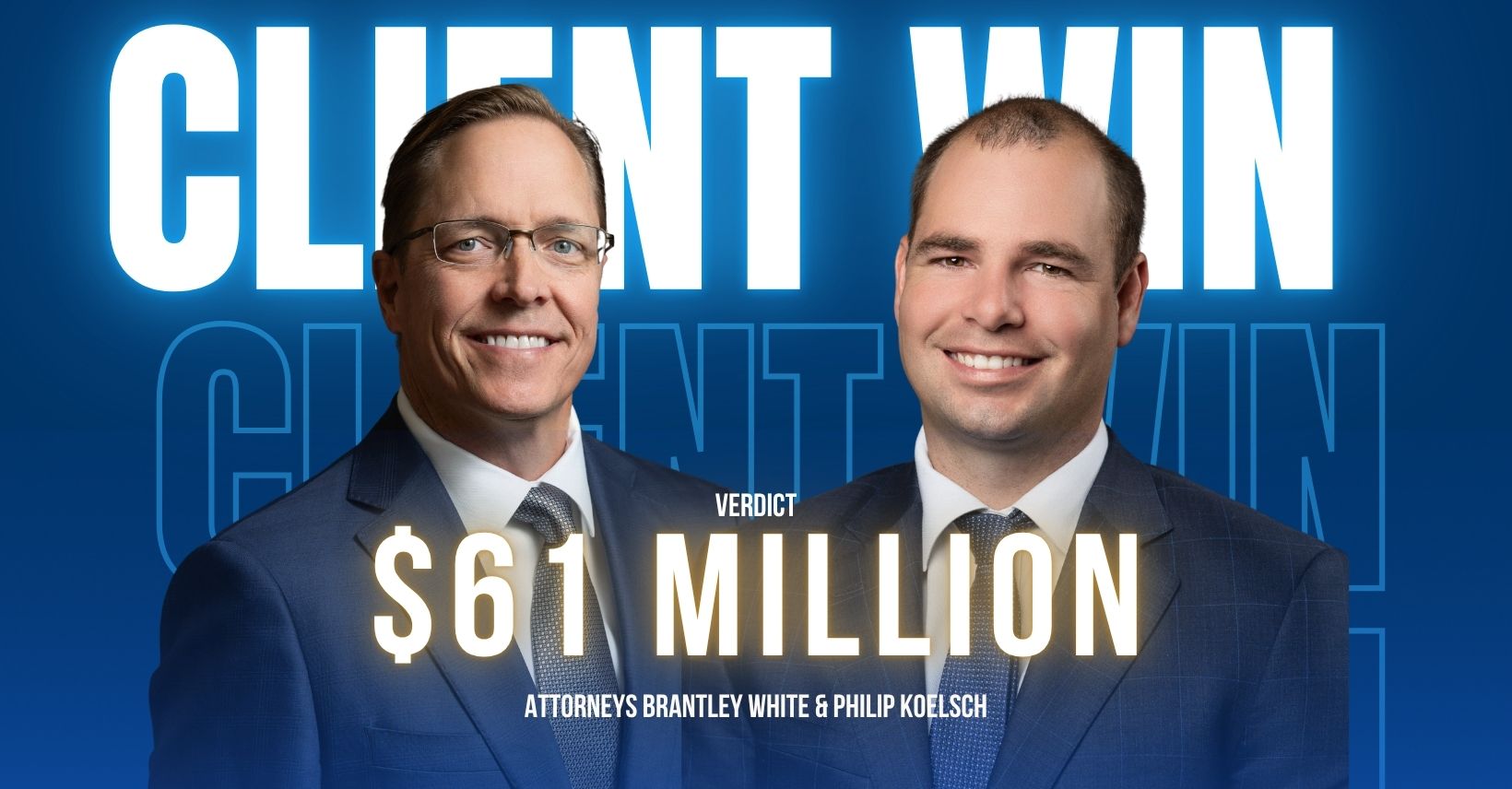If you’ve ever watched TV, then chances are you’ve seen a commercial asking if you or a loved one has been diagnosed with an illness caused by some kind of medical product— whether it was a prescription drug or some other kind of medical device. “You may be entitled to compensation,” the ads say. “Contact us today!”
Many people are skeptical of these claims, and some even say these “frivolous” lawsuits increase the cost of healthcare. But do lawsuits claiming a product is harmful cause the price of that product to go up? Do lawsuits actually affect drug prices?
The Problem with Prescription Drug Prices
The problem with prescription drug prices stems mainly from the fact that the pharmaceutical industry can more or less set prices for drugs however it wants. Unfortunately, that means that pharmaceutical companies often set prices much higher than they need to. With no government agencies to regulate drug prices, patients in the United States end up paying much more for prescription drugs than patients in similar countries.
Studies Reveal the Issue of Prescription Drug Pricing in the U.S.
Several studies have found that people in other countries similar to the United States pay far less for prescription drugs than Americans do. In 2021, the RAND Corporation published a study in which researchers compared prices for prescription drugs with prices for those same drugs in 32 other countries, including the UK, Germany, and Australia. The researchers found that prices of prescription drugs were, on average, 156% higher in the U.S. than in other countries in the study. Further, a 2021 report by The U.S. Government Accountability Office found that drug prices in the U.S. were two to four times higher than prices for the same drugs in Australia, Canada, and France.
Unfortunately, the problem only seems to be getting worse. Prescription drug prices have continued to rise over the years at a rate even higher than inflation. In 2020, researchers from the University of Pittsburgh found that the average price of some brand-name prescription drugs had increased by over 150% from 2007 to 2018. GoodRx reported that in January 2021, drug companies had increased the prices of 832 drugs by an average of 4.5% and in July 2021 had increased the price of 67 drugs by an average of 3.5%.
The already high and continually increasing prices of prescription drugs is a real problem for people in the United States. In 2019, nearly 3 in 10 American adults stated that they were unable to take medication as it was prescribed because of the cost. The U.S. government knows that the rising cost of drugs and healthcare in general is a problem, but the solution to the issue is not quite so clear.
Do Mass Tort Lawsuits Affect Healthcare and Drug Prices?
Some people believe the government could help lower the cost of healthcare through tort reform. Tort reform, according to Forbes, is “any attempt on the part of state or federal lawmakers to:
- Make it more difficult for injured victims to file lawsuits against those who hurt them
- Limit the amount of compensation victims can recover when they do file a lawsuit.”
Supporters of tort reform often argue that changing the way these types of lawsuits are handled would lower healthcare costs. However, there has not been much published evidence to support this idea. In fact, some studies have shown that tort reform doesn’t lower healthcare spending and may decrease the quality of healthcare.
The Austin American-Statesman reported that in 2012, a group of researchers in Texas examined the effects of a 2003 constitutional amendment that restricted payouts of medical malpractice claims. Those who promoted the amendment argued that limiting award amounts for malpractice claims would lower healthcare costs for patients. However, after looking at Medicare spending between 2002-2009 in Texas for disabled patients and senior citizens, the researchers found there was no difference in doctor’s fees.
In 2020, Zenon Zabinksi and Bernard S. Black published a study in which they found that “patient safety generally falls” after medical malpractice damage caps are put into place. Zabkinski and Black also state that the damage caps also led to “higher rates of preventable adverse patient safety events in hospitals.”
Tort Reform Likely Won’t Lower Costs for Prescription Drugs
The idea that tort reform would lower the cost of healthcare in general is debatable. However, the idea that tort reform would lower the prices of prescription drugs is even less likely. Why? Because the cost of lawsuits is not one of the top reasons that drugs are priced so highly.
To make effective changes in lowering costs of prescription drugs, it’s important to understand why the prices are so high to begin with. There are many reasons for the high prices of prescription drugs. However, having to recuperate the costs of defending pharmaceutical companies in lawsuits is generally not the driving factor for high prices of drugs.
In other words, if pharmaceutical companies aren’t charging high prices primarily for the purpose of recovering money they lost in lawsuits, then changing how those lawsuits are handled likely will not have a drastic effect on the prices they charge for those drugs.
What Are the Biggest Factors That Lead to High Drug Prices?
There are many factors that lead to the high price of prescription drugs. The issue of high drug prices is a complex one involving the pharmaceutical industry, the healthcare industry, the U.S. government, and many other organizations. Here are the biggest factors that contribute to the high prices of prescription drugs.
Monopoly
One of the biggest and most important factors that contributes to high drug prices is the monopoly issue. Monopolies occur when there is no competition for a service or product, and it often results in higher prices. Each year, many new drugs are patented, giving the companies exclusive rights to producing and selling the drug. This means there can be no alternatives to the drug. Because people don’t have access to a less expensive option, the companies charge higher prices.
In an ideal scenario, monopolies on drugs would be temporary, as patents eventually expire and generic competition drives prices down. However, in many cases, by the time a patent life expires on a drug, the standard of care has already changed to a newer drug. Newer drugs are protected by patents, which can essentially extend the monopoly.
It’s clear that monopolies cause major problems and should be regulated. In fact, many countries already have regulations in place that limit the launch prices of new drugs. However, the United States has no regulations in place to control prescription drug prices.
Severity of the Disease
Another factor that, unfortunately, contributes to some high drug prices is that some medications are desperately needed to improve or save the lives of patients. Patients who have chronic, life-threatening illnesses are often willing to pay any price to prolong their life. This, combined with a monopoly on a drug, can lead to drug prices soaring above what they should be.
Drug Development Costs
It is true that drug development is costly and time-consuming. On average, it takes about 12 years to move a drug from preclinical testing to final approval. Further, it costs approximately $3 billion to develop a new drug. While drug development costs do factor into the price of a drug, some experts believe these estimates are inflated.
Pharmaceutical Lobbying
Another factor to consider is pharmaceutical lobbying. Lobbying, according to the National Conference of State Legislatures, can be defined as “an attempt to influence government action through either written or oral communication.” In 2018, pharmaceutical companies and their trade organization spent approximately $220 billion in the United States. Many people believe that the lobbying power of the pharmaceutical and healthcare industry has prevented any regulatory or legislative reform that could help lower prescription drug prices.
Lack of Price-Regulating Agencies
As stated above, the United States currently has no agency that has legal authority to regulate or negotiate the price of all drugs. Typically, pharmaceutical companies set their own prices, leaving insurers and pharmacists to decide how much a patient will pay out-of-pocket. However, President Biden’s Inflation Reduction Act recently passed, which will allow Medicare to negotiate the prices for ten prescription drugs, which, in 2022, cost people with Medicare $3.4 billion out-of-pocket.
Why Are Mass Torts Beneficial?
Tort reform would likely not solve the problem of high prescription drug prices, as lawsuits don’t drastically affect drug prices. The solution to the problem is not to stop the lawsuits in hopes of lowering drug prices. Not only would drug prices not decrease, but the many benefits of mass torts would disappear as well.
1. Mass Torts Can Prompt Companies to Pull Harmful or Defective Products From the Market
A huge benefit of mass tort lawsuits is that they often prompt companies to pull to harmful or defective products from the market. A recent example of this is the Talcum Powder lawsuit in which Johnson & Johnson was sued for its talcum powder, which contained asbestos that studies have linked to ovarian cancer. Thanks to the efforts made by those in the mass tort, Johnson & Johnson pulled their talc-based baby powder from the shelves in 2020, replacing it with a safer alternative.
2. Mass Torts Help Spread Awareness
Another benefit of mass torts is how they spread awareness and warnings. If a drug or a product can cause injury or illness, it’s best to warn as many people as possible of the potential risk. These warnings can help save lives. In addition, many drugs and products that mass torts center around are widely-used products. Thousands of people could have been affected but might not be aware of the issue. Mass torts help get the word out to those people that they aren’t alone in their situation.
3. Mass Torts Hold Industries Accountable
Mass torts are also important because they can hold industries accountable. In tort lawsuits, there are generally two types of damages: compensatory and punitive. Compensatory damages are awards given to those who have been wronged or hurt; they are compensation for a party’s losses. Juries can award the other type of damages, punitive damages, to punish a wrongdoer for gross negligence or outrageous conduct. Punitive damages in mass torts can hold companies accountable for their negligent decisions.
4. Mass Torts Help Get Justice
The most important reason that mass torts are beneficial? They can help large amounts of people who have been harmed get justice. A great example of this is the recent 3M Defective Earplug mass tort. This lawsuit allowed nearly 260,000 veterans to sue 3M for the defective earplugs the company sold to the U.S. Army. In August 2023, 3M agreed to pay $6.01 billion to settle the lawsuit. Because of the mass tort, affected veterans will receive compensation for hearing loss and hearing damage caused by faulty earplugs.
The Carlson Law Firm Can Help
If you’ve been harmed by a dangerous drug or a defective product, it’s important that you know you’re not alone. Our caring and compassionate mass tort attorneys can help you get the compensation you deserve and hold negligent companies accountable. We offer free consultations, and we’re available 24/7. We care, and we can help.




